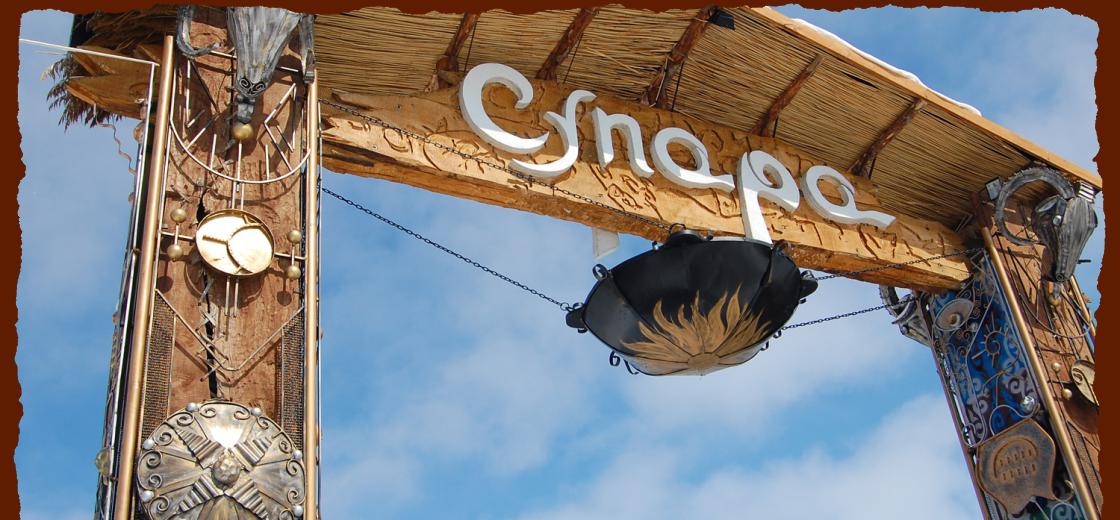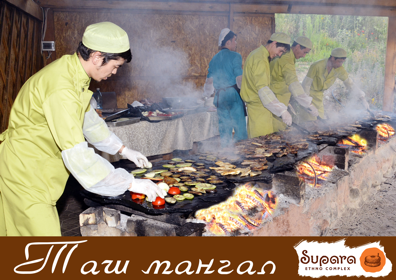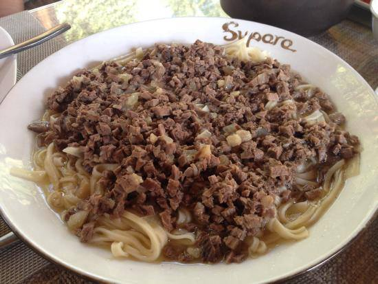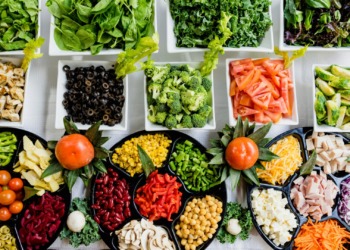Kyrgyz cuisine is very much influenced by the nomadic past of the country, thus, meat dishes dominate in the Kyrgyz food culture. As in every country, food has a special place in the life of people, but in Kyrgyzstan it is also a matter of hospitality, respect, and social approval. For instance, whenever you have guests, it is only a woman (mother, daughter or daughter-in-law) who must offer a cup of tea. Cups are called “piala” and piala must never be filled to the rim with tea as it may have an unexpected meaning that could offend a guest: “here is a full cup of tea, drink quickly and go.” Instead, piala should be half full and whenever the tea has been drunk, piala should be refilled. All the nuances of Kyrgyz food customs create a unique food culture, which is not to be seen anywhere else.
… a place where traditions come alive. While their skillful chefs cook your food, you can take a tour around the complex with a special guide who will tell you all about the Kyrgyz traditions and food culture.
To tell us more about Kyrgyz cuisine, its traditional and national dishes we have asked PR Manager of the Ethno-Complex “Supara” Mrs. Aizahan Tazabekova. Ethno-Complex “Supara” is not just a regular restaurant, but also a place where traditions come alive. While their skillful chefs cook your food, you can take a tour around the complex with a special guide who will tell you all about the Kyrgyz traditions and food culture (available in Kyrgyz, Russian and English). During the tour you can see ancient tools that Kyrgyz people used to cook food, big and small yurts (Kyrgyz traditional home) with traditional interiors, and feel as if you’ve travelled back in time.
“Since ancient times, Kyrgyz people have paid a particular importance to the food culture. As a country of mountains and nomads, Kyrgyzstan’s cuisine consists mainly of meat dishes and specialties made of lamb, beef and horsemeat.
Big events, called “Toi” in Kyrgyz language, such as weddings and anniversaries, call for celebrations on a grand scale, with a huge variety of special dishes that not only show the wealth of a family, but are also an expression of respect and hospitality towards the honored guests.
In the Photo: Hospitality of “Supara” staff. Photo Credit: Ethno-Complex “Supara.”
The Kyrgyz main food tradition is called “Ustukan Tartmai,” which is an important and special ritual of dividing a lamb according to the person’s status. During this ritual, every part of the lamb has its own meaning and after being cooked must be divided respectively. For example, the pelvic part of the lamb is considered to be the most important part and therefore is given to the eldest and most honored guest. The first 12 ribs of the lamb are also considered important, while the last 2 ribs are given to children. Other parts, such as legs and neck, are not served and must be kept by the host. This ritual is of significant importance and accuracy. If and elderly guest has been served with the wrong part, he might take it as an offense and consider it a sign of disrespect. In ancient times, improper serving of “ustukans” could have even sparkled a war between tribes. Even nowadays, knowledge of this tradition is of great importance and ignorance is considered a disgrace.
Related article: “THE GREAT SILK ROAD IN KYRGYZSTAN“
Traditional Kyrgyz cuisine is very diverse. Although the main ingredient is meat, vegetables, grains and dough are widely used as well. One of the most delicious dishes is “Tash Mangal,” made of the lamb ribs and fried without any marinade on the special slate stones that can withstand a very high temperature.
In the Photo: Tash Mangal preparation. Photo Credit: Ethno-Complex “Supara.”
A delicacy, called “Chuchuk” is a traditional Kyrgyz sausage made of horsemeat and fat. It is very much loved by local Kyrgyz as well as by meat lovers from all around the world.
The king of the Kyrgyz food is “Besh Barmak,” which literally translates as “Five Fingers” because it is eaten with one’s hand and is known for being finger-licking-good. “Besh Barmak” is made with boiled horsemeat or lamb cut into small pieces and placed over home-made noodles, then covered with a sauce called “Chyk,” which is made from the broth, onion, garlic, salt and pepper.
Every year, more and more locals and foreign guests visit this restaurant and come to appreciate not only our traditional Kyrgyz dishes, but also plunge into the past, into the ancient world, where all the Kyrgyz age-old values are reviving.
In the Photo: “Besh Barmak” Photo Credit: Ethno-Complex “Supara.”
Baked food includes flat bread called “Nan” and made in the tandoor, and two more traditional deep fried bread types “Kattama” and “Boorsok,” usually served with Smetana (sour cream), jam or honey. Overall, bread has a sacred importance in the Kyrgyz culture. Even if a person just came into your house for a few minutes a Kyrgyz host will always offer at least a cup of tea and some bread with jam.
For a full mindmap behind this article with articles, videos, and documents see #kyrgyzstan
In the Photo: A set of breads and cold cuts. Photo Credit: Ethno-Complex “Supara.”
Traditional Kyrgyz drinks include “Kymyz,” made of fermented mare’s milk and is slightly alcoholic. Kymyz is also considered a medicine for lungs, the immune system and digestion. In recent years, a thing called Kymyz Treatment has been introduced around the country, during which, one can improve their health and enjoy beautiful nature and in a quiet environment.
All the dishes and drinks mentioned above are prepared in the Ethno-Complex “Supara”. Every year, more and more locals and foreign guests visit this restaurant and come to appreciate not only our traditional Kyrgyz dishes, but also plunge into the past, into the ancient world, where all the Kyrgyz age-old values are reviving.”
Recommended reading: “FOOD IN KYRGYZSTAN: 5 DELIGHTFUL DISHES”
_ _
Special thanks to the PR Manager of Ethno-Complex “Supara” Mrs. Aizahan Tazabekova for providing information and photos.













